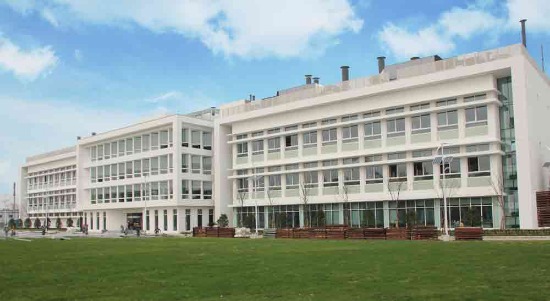Displaying items by tag: BASF
New anionic surface sizing agent Basoplast® 450 P
 Since its invention by BASF, polymeric surface sizing agents (PSA) have seen many developments to reach their current performance levels. Recently, research, development and application specialists at BASF jointly completed their work on a new product for this established technology that allows papermakers to significantly improve on sizing costs. Traditionally, PSA for the liner segment used cationic polymers. This however limited the coloration to certain product ranges.
Since its invention by BASF, polymeric surface sizing agents (PSA) have seen many developments to reach their current performance levels. Recently, research, development and application specialists at BASF jointly completed their work on a new product for this established technology that allows papermakers to significantly improve on sizing costs. Traditionally, PSA for the liner segment used cationic polymers. This however limited the coloration to certain product ranges.
With Basoplast® 450 P, BASF introduces a new and highly cost- efficient PSA for the packaging segment. The product is suited for linerboard grades and complements BASF’s offer of anionic PSA in the graphical paper market. By replacing cationic PSA in packaging with Basoplast® 450 P, paper manufacturers now canadjust the desired coloration in the surface with direct dyes, which can provide a more cost-efficient solution than incumbent systems. Developing cost-efficient systems and solutions is built on the strengths of BASF’s expanded portfolio after the acquisition of legacy Ciba. Direct dyes are sourced from BASF’s new plant in Ankleshwar, India.
In addition to the new opportunities for cost-efficient coloration, BASF’s new anionic PSA Basoplast® 450 P agent shows no foaming tendency or sensitivity to pH or starch type and can be used in both, size or film-press. It further has received food contact approval (BfR XXXVI, FDA 176.170, 176.180).
“With Basoplast® 450 P we offer the first anionic polymeric sizing agent able to compete against cationic polymeric surface sizing agents traditionally used in liner and board. We recently had various mill trials throughout Europe and in consequence are able to promptly launch the product in the market. But, this invention also required cross-divisional support through the know-how- and production Verbund of BASF, especially the Petrochemicals Division. It shows that BASF can be very successful if we act as onecompany,” says Dr. Frank Höfer, Vice President, Marketing Paper Chemicals Europe.
“Our consistency in research & development work, also on established product lines, has made this new market opportunity available. This example shows very clearly that even in mature applications, with lots of creativity and enthusiasm, our development specialists are able to find new and successful products with which we can help our customers to achieve their targets in performance and cost reductions," adds Dr. Thomas Stährfeldt, Vice President, Innovation Paper Chemicals.
BASF Innovation Campus Asia Pacific and Greater China headquarters inaugurated
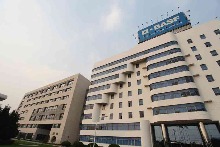 BASF, the world’s leading chemical company, today inaugurated its first BASF Innovation Campus Asia Pacific and its new Greater China headquarters. The € 55 million expansion of BASF’s site in Pudong, Shanghai, where the new facilities are located, marks the company’s most important innovation investment in the region to date. Ultimately employing more than 2,500 employees, the site will be one of BASF’s largest outside of Germany.
BASF, the world’s leading chemical company, today inaugurated its first BASF Innovation Campus Asia Pacific and its new Greater China headquarters. The € 55 million expansion of BASF’s site in Pudong, Shanghai, where the new facilities are located, marks the company’s most important innovation investment in the region to date. Ultimately employing more than 2,500 employees, the site will be one of BASF’s largest outside of Germany.
“Innovations based on chemistry will play a key role in providing solutions to help Asia Pacific meet the challenges of sustainable development. Through close cooperation with materials scientists, technical experts, business colleagues and customers, BASF will create innovations from Asia, for Asia and the world.By 2020, we expect to have about 25 percent of our global R&D headcount in this region,” said Dr. Martin Brudermueller, Vice Chairman of the Board of Executive Directors of BASF SE, responsible for Asia Pacific.BASF employs more than 800 people in research and development in Asia Pacific.
“The Innovation Campus Asia Pacific will play a central role to gain local access to customers, talent and innovation centers. I am convinced that the enthusiasm and scientific spirit of our colleagues will cross over to other regions in our BASF Verbund and will be the cornerstone of our growing global scientific network in Asia,” said Dr. Andreas Kreimeyer, Member of the Board of Executive Directors, Research Executive Director.
At the first phase of the new Innovation Campus Asia Pacific, around 450 researchers and developers in technical teams from 17 regional business units will come together, forming a powerful innovation hub for BASF in Asia Pacific. Scientists in close proximity to local markets will work in international and multi-disciplinary project teams. The Innovation Campus will also help intensify development of local scientific and technical talent and to foster collaboration with universities and scientific institutes in Asia Pacific. Further expansion of the facility is also planned.
At the site, researchers will focus on advanced materials and sustainable solutions. Examples include biobased polymers for home and personal care applications, tailor-made binders for waterproofing in a variety of local climate and weather conditions, thermally conductive plastics for energy-efficient lighting, and advanced polyurethane formulation for shoe components. Additionally, a strong analytics and material physics team will support the R&D activities.
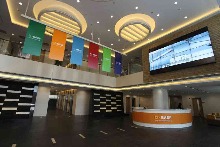 “The overall expansion of the Pudong site marks an important milestone in the history of BASF in Greater China, more specifically of BASF in Shanghai. As one of our largest integrated sites, the Pudong site will be a key enabler for collaboration between BASF employees and customers. Additionally, we aim to engage closely with nearby communities and contribute to the development of Shanghai as an international innovation hub,” said Johnny Kwan, Chairman of BASF Greater China Country Board.
“The overall expansion of the Pudong site marks an important milestone in the history of BASF in Greater China, more specifically of BASF in Shanghai. As one of our largest integrated sites, the Pudong site will be a key enabler for collaboration between BASF employees and customers. Additionally, we aim to engage closely with nearby communities and contribute to the development of Shanghai as an international innovation hub,” said Johnny Kwan, Chairman of BASF Greater China Country Board.
China is BASF’s third-largest market worldwide. The new Greater China head office will include administration, functional units, and sales and marketing for its business units with more than 1,500 work stations, comfortable social areas on each floor, and a state-of-the-art, multi-function theater.
Globally, at about 70 research and development centers, more than 10,000 BASF researchers in various disciplines are engaged in about 2,800 research projects around the world. The BASF central research and development organization is also integrated into an interdisciplinary and international network: in about 1,950cooperative partnerships the company is working closely together with partners from science and industry worldwide to develop solutions for a sustainable future. In 2011, BASF filed about 1,050 patents worldwide.
Ralf Spettmann becomes head of the business unit for Pigments & Resins Europe
On October 1, 2012, Ralf Spettmann (47) was appointed Senior Vice President of the Pigments & Resins Europe business unit of BASF. Beforehand, he was Senior Vice President of the Fuel and Lubricant Solutions unit. In his new function, he will be in charge of the product families of pigments, resins and additives for the coating, paint, printing and packaging industry. The Pigments & Resins Europe unit is part of the Dispersions & Pigments division of BASF.
Spettmann succeeds Jan-Peter Sander, who has become head of the Personal Care Europe unit.
About BASF’s Dispersions and Pigments Division
BASF is the leading global supplier of raw materials for the coating and paint industry. The division Dispersions & Pigments combines all BASF offerings towards this industry. The portfolio encompasses pigments, resins, dispersions and a broad range of additives like light stabilizers and photo initiators. Further end-use industries include construction materials, adhesives, printing and packaging. Our portfolio is focused on environmentally friendly systems, such as low-VOC water-based coatings. More details to be found on the Internet: www.dispersions-pigments.basf.com
BASF and CSM establish 50-50 joint venture
BASF and Purac, a subsidiary of CSM, are establishing a joint venture for the production and sale of biobased succinic acid. The company will be named Succinity GmbH and will be operational in 2013. The establishment of Succinity GmbH is subject to filing with the relevant competition authorities. The company headquarters will be in Düsseldorf, Germany.
BASF and CSM have been conducting research on succinic acid under a joint development agreement since 2009. The complementary strengths in fermentation and downstream processing led to the development of a sustainable and highly efficient manufacturing process based on a proprietary microorganism. The bacterium used is Basfia succiniciproducens, which produces succinic acid through natural processes. It is capable of metabolizing a variety of renewable feedstocks into succinic acid. The new process combines high efficiency with the use of renewable raw materials and the fixation of the greenhouse gas carbon dioxide (CO2) in the production of succinic acid. This makes biobased succinic acid an economically and ecologically attractive alternative to petrochemical raw materials.
The demand for succinic acid is anticipated to grow strongly in the years ahead, driven mainly by bioplastics, chemical intermediates, solvents, polyurethanes and plasticizers.
BASF and CSM are currently modifying an existing fermentation facility at Purac’s Montmélo site near Barcelona, Spain, for the production of succinic acid. This plant, which will commence operations in late 2013 with an annual capacity of 10,000 metric tons of succinic acid, will put the new joint venture company in a leading position in the global marketplace. This is complemented by plans for a second large-scale facility with an annual capacity of 50,000 metric tons of succinic acid to enable the company to respond to the expected increase in demand. The final investment decision for this facility will be made following a successful market introduction.
“Our strategy clearly focuses on innovations for a sustainable future. Chemistry-driven innovations are the responses to megatrends, such as the shift to renewable raw materials. The development of a succinic acid production process based on fermentation in cooperation with Purac is a good example of this strategy being put into practice,” said Dr. Andreas Kreimeyer, Member of the Board of Executive Directors and Research Executive Director of BASF.
“CSM is developing into a leading provider of biobased ingredients and solutions. Our joint venture with BASF for the production and sale of succinic acid is a milestone in this journey. The succinic acid project is fully in line with our strategy to develop commercially attractive biobased alternatives using renewable and sustainable resources,” explained Gerard Hoetmer, Chief Executive Officer of CSM.
“Our cooperation with Purac to produce biobased succinic acid is a perfect example of how we enable our customers in many industries to develop sustainable solutions,” said Sanjeev Gandhi, President of BASF’s Intermediates division.
“We know from many discussions with customers and samples we sent them that the demand for biobased succinic acid for example for biodegradable plastics is set to grow faster and more strongly than expected earlier,” said Fabrizio Rampinelli, President of Purac, and added, “We look forward to providing a high-quality product globally to customers in this industry at our usual high service levels.”
Jan-Peter Sander named Senior Vice President of BASF’s business unit Personal Care Europe
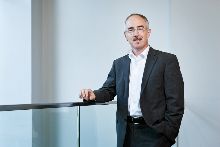 Jan-Peter Sander (53) has been named Senior Vice President of BASF’s business unit Personal Care Europe, and will take up the role on October 1, 2012. Prior to his appointment, he held the same position at BASF’ business unit Pigments and Resins Europe. In his new position, Sander will be responsible for all areas of the business, including manufacturing, supply chain, technology, marketing and sales. He will also be in charge of ensuring that BASF’s personal care business strategy continues to be successfully implemented in the future. The business unit Personal Care Europe has been established after the acquisition of Cognis to bring together BASF’s European personal care business activities and is part of BASF’s Care Chemicals division.
Jan-Peter Sander (53) has been named Senior Vice President of BASF’s business unit Personal Care Europe, and will take up the role on October 1, 2012. Prior to his appointment, he held the same position at BASF’ business unit Pigments and Resins Europe. In his new position, Sander will be responsible for all areas of the business, including manufacturing, supply chain, technology, marketing and sales. He will also be in charge of ensuring that BASF’s personal care business strategy continues to be successfully implemented in the future. The business unit Personal Care Europe has been established after the acquisition of Cognis to bring together BASF’s European personal care business activities and is part of BASF’s Care Chemicals division.
Sander, a trained import-export merchant, has been with BASF for 25 years. He joined the company as Marketing and Product Manager in 1987, and subsequently held executive-level positions at various BASF operating divisions in both Germany and abroad.
Sander will succeed Simon Medley, who has decided to leave BASF to pursue his career outside the group.
“I look forward to building on the excellent work which has been done in driving forward the unit’s strategy,” said Sander. “We will continue to establish BASF as the market-leading supplier to the personal care industry by focusing on anticipating customers’ current and future requirements and providing the market with innovation-driven solutions.”
BASF increases prices for polymer dispersions, polymer powders and acrylic resins
With effect from October 01, 2012, or as contracts allow, BASF will increase prices in Europe, Africa and Western Asia for polymer dispersions, redispersible powders and acrylic resins by 50 - 100 Euro per metric ton. The price increase is necessary due to the significant rise in the cost of raw materials.
The products affected by the price increase are used as polymers for architectural coatings and construction chemicals as well as in the coatings, printing and packaging industries.
About BASF
BASF is the world’s leading chemical company: The Chemical Company. Its portfolio ranges from chemicals, plastics, performance products and crop protection products to oil and gas. We combine economic success, social responsibility and environmental protection. Through science and innovation we enable our customers in almost all industries to meet the current and future needs of society. Our products and system solutions contribute to conserving resources, ensuring healthy food and nutrition and helping to improve the quality of life. We have summed up this contribution in our corporate purpose: We create chemistry for a sustainable future. BASF posted sales of about €73.5 billion in 2011 and had more than 111,000 employees as of the end of the year. BASF shares are traded on the stock exchanges in Frankfurt (BAS), London (BFA) and Zurich (AN). Further information on BASF is available on the Internet at www.basf.com.
BASF again included in three renowned indices
BASF was again included in the global Dow Jones Sustainability Index (DJSI World). The company has been recognized for its sustainability engagement in areas such as climate strategy, risk and crisis management as well as human capital development. The DJSI World is one of the most recognized sustainability indices and represents the top 10 percent of the largest 2,500 companies in each industry included in the Dow Jones Global Index.
BASF share is included in the DJSI World for the twelfth consecutive year. The listed companies have to demonstrate continuous improvement every year with regards to sustainability and are assessed by analysts from Sustainable Asset Management Group (SAM).
Carbon Disclosure Leadership Index and Carbon Performance Leadership Index
According to the international investor group Carbon Disclosure Project (CDP), BASF is among the ten leading companies in the world in climate protection. In the current ranking, the Carbon Disclosure Leadership Index (CDLI) listed BASF again with an outstanding place for the eighth time and the company has been included in the Carbon Performance Leadership Index (CPLI) for the third time and thus continuously since establishment of this index.
CDP represents 655 institutional investors holding $78 trillion in assets under management. Investors use CDP indices as assessment tools.
The CDLI contains 51 companies that disclose their data in a particularly transparent and comprehensive manner. As in previous years, BASF is the top scorer in the Materials sector.
The CPLI lists 33 companies based on their exemplary performance in climate protection activities – for example their climate strategy, their stakeholder communication or their management system. At the beginning of 2012, BASF established a new, ambitious climate protection goal: By 2020 the company wants to reduce the global greenhouse gas emissions per metric ton of sales product by 40 % compared to 2002.
Sustainability is integral to BASF’s strategy “We create chemistry“ and a main growth driver. Additional information on sustainability at BASF is available on the Internet at www.basf.com/sustainability.
BASF expands center of competence for adhesive coatings
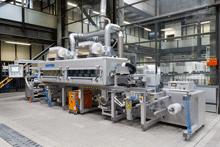 BASF expanded its coating center recently by adding a tailor-made and flexible laboratory coating and laminating facility. The new coater facilitates the development of adhesive systems for flexible packaging, labels, tapes and functional film coatings. It increases the capacity for customer tests and speeds up the development of new products as well as the adaption of existing adhesive formulations to new carrier materials.
BASF expanded its coating center recently by adding a tailor-made and flexible laboratory coating and laminating facility. The new coater facilitates the development of adhesive systems for flexible packaging, labels, tapes and functional film coatings. It increases the capacity for customer tests and speeds up the development of new products as well as the adaption of existing adhesive formulations to new carrier materials.
Leadership in adhesive coatings
“By expanding our coating center, we are able to further strengthen our technical leadership and innovation power when it comes to water-based adhesive systems and UV acrylic hotmelts. Our mission is the long-term success of our customers,” explains Dr. Jürgen Pfister, head of Dispersions for Adhesives and Fiber Bonding Europe. The universal laboratory coater produces exact, reproducible coatings of water-based and UV acrylate hotmelt systems, only requiring a minimum quantity of one kilo of adhesive. The pre-treatment and lamination of a variety of film combinations is possible without any problems.
The center of competence for adhesive coatings is located in Ludwigshafen, the global headquarters of BASF. The coating experts closely cooperate with all relevant BASF R&D centers for adhesive raw materials and the respective regional business units. The competences and experiences of those who work in technical service, development, research and laboratory are assembled here. The centerpiece of the competence center is the existing pilot coater for dispersions. With a coating speed of 1,800 meters per minute the coating team holds the world record with this machine. Further the new universal laboratory coater adds to BASF’s competences.
To further drive innovation, BASF invests every year more than €800,000 in the modernization and maintenance of its adhesive coating facilities. “Together with our customers we are working today on solutions to tomorrow’s problems,” says Andree Dragon, Technical Manager of the coating center.
BASF, Cargill and Novozymes target commercial bio-based acrylic acid process
BASF confirms outlook for 2012 despite growing economic risks
- 2nd quarter 2012:
-
Sales up 6% and EBIT before special items up 11%
compared with previous year’s quarter - Strong business in Agricultural Solutions
- Significant decrease in growth in China
-
Sales up 6% and EBIT before special items up 11%
- Outlook full year 2012: increase in sales and earnings targeted
BASF’s business performed solidly in the second quarter. The company improved sales by 6% to €19.5 billion and income from operations (EBIT) before special items increased by €253 million to €2.5 billion. While sales volumes declined in the chemicals business, which comprises the Chemicals, Plastics, Performance Products and Functional Solutions segments, the main contribution came from the strong performance of the Agricultural Solutions and Oil & Gas segments. In the first half of 2012, sales were €40.1 billion, 6% more than in the same period of the previous year. At over €5 billion, EBIT before special items matched the level of the first half of 2011.
At the presentation of the company’s second-quarter results, Dr. Kurt Bock, Chairman of the Board of Executive Directors, commented on the growing economic risks: “Our customers are continuing to act cautiously and are reducing their inventories, also in expectation of falling prices due to declining raw material costs.” In addition, the Chinese growth engine has started to stall leading to a decrease in BASF’s sales in local-currency terms in Asia in the second quarter, as they also did in the first quarter of 2012, explained Bock.
BASF confirms outlook for full year 2012
A look at the economic developments in the past months and at the order books have led BASF to become more cautious about its expectations for the global economy in 2012 than originally expected at the beginning of the year (previous forecast in parenthesis):
- Growth of gross domestic product: 2.3% (2.7%)
- Growth in industrial production: 3.4% (4.1%)
- Growth in chemical production: 3.5% (4.1%)
- An average euro/dollar exchange rate of $1.30 per euro
- An average oil price of $110/barrel in 2012
BASF does not expect an upturn in demand in the second half of 2012 compared with the first six months of the year. Pressure on margins will continue, although it may be somewhat lessened due to slightly lower raw material costs.
Bock said: “It remains our goal to increase sales and earnings compared with the second half of 2011. Our forecast is especially supported by the resumption of our crude oil production in Libya. It is unlikely that the earnings from our chemicals business will match the level of the previous year. We still aim to exceed the 2011 record levels in sales and EBIT before special items.”
To counter the challenges of the markets and the great political and macroeconomic uncertainties, BASF wants to protect its margins and create value. The excellence program, STEP, announced in November 2011, which is expected to contribute around €1 billion to earnings each year as of the end of 2015, is fully on track. Measures will be accelerated and spending carefully analyzed. BASF is continuing to optimize its working capital, as is demonstrated by the good cash flow development in the second quarter. Although the company had planned a slight increase in its workforce in 2012, especially in emerging markets, it will slow this down due to the lack of visibility as to when business in Asia will pick up again.
Second-quarter business development in the segments
In the Chemicals segment, sales were slightly below the level of the previous second quarter, primarily due to lower sales volumes. Along with weaker demand, the optimization of the supply chain for steam cracker products, carried out in the third quarter of 2011, contributed to this decline in volumes. Sales to Styrolution Group companies had a positive impact on sales development for the segment. Earnings decreased significantly as a result of falling margins and the scheduled maintenance shutdown of several plants.
Sales in the Plastics segment surpassed the level of the second quarter of 2011. While sales volumes were weaker, positive currency effects in particular boosted sales growth. Lower margins for some basic products led to a significant decline in earnings.
Sales in the Performance Products segment grew slightly compared with the previous second quarter, largely as a result of positive currency effects. Sales volumes were lower. Increased raw material costs could not be fully passed on through higher sales prices. Earnings therefore declined due to lower margins and volumes.
Sales in the Functional Solutions segment increased. In addition to the inclusion of 50% of the Korean joint venture Heesung Catalysts Corporation, positive currency effects were particularly responsible for sales growth. This was partially offset by lower prices, especially in precious metals. Earnings did not match the level of the previous second quarter, primarily as a result of higher raw material costs.
Business was very successful in the Agricultural Solutions segment. Sales volumes increased in all indications and regions. Furthermore, higher sales prices and positive exchange rate effects contributed to significant sales growth. Earnings were also considerably above the level of the previous second quarter. At €833 million, EBIT before special items in the first six months of 2012 already exceeded the amount for the full year 2011 (€810 million).
Increased volumes as well as higher gas prices led to significant sales growth in the Oil & Gas segment. Volumes grew in natural gas trading due to greater demand on spot trading markets. After the suspension of production in Libya from February to October of the previous year, it was possible to continuously produce crude oil there throughout the second quarter of 2012. Earnings before tax therefore considerably exceeded the level of the previous second quarter. Net income in
Oil & Gas declined.
Other posted a decline in sales, largely as a result of the divestiture of the styrenic plastics business, which was contributed to the Styrolution joint venture as of October 1, 2011. Earnings in Other improved as a result of lower provisions for the long-term incentive program, while an expense had been incurred in the previous second quarter.
Business development in the regions
In Europe, sales increased by 9% in the second quarter of 2012. Volumes in the Agricultural Solutions and Oil & Gas segments grew significantly. Sales rose considerably in the Chemicals segment due to portfolio effects. EBIT before special items grew by €467 million to €1.9 billion, thanks to the higher contribution from the Oil & Gas and Agricultural Solutions segments.
In North America, sales in the second quarter fell by 15% in U.S. dollars and by 5% in euro terms. This was mainly the result of lower volumes due to plant shutdowns and the optimization of the supply chain for steam cracker products in the third quarter of 2011. Sales in the Agricultural Solutions segment grew in all indications thanks to high demand. Lower margins in the Petrochemicals division as well as higher fixed costs resulting from plant shutdowns led to a €127 million decline in earnings to €330 million.
Compared with the same period of 2011, sales in the Asia Pacific region were down 1% in local-currency terms and up 9% in euro terms. Positive currency effects more than offset reduced sales prices. Sales rose significantly in the Catalysts division, mainly due to higher sales volumes. Weaker margins, especially in the Petrochemicals division, led to a €57 million decline in earnings to €229 million.
Sales in the South America, Africa, Middle East region rose by almost 1% in local-currency terms and in euro terms. While the business with crop protection products was very successful, sales in the Catalysts division declined due to lower volumes. Earnings in the region decreased by €30 million to €54 million.

